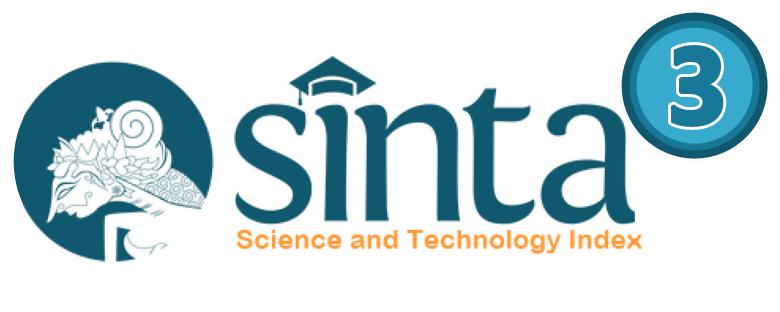PENERAPAN MODEL PEMBELAJARAN KOOPERATIF TIPE MAKE A MATCH UNTUK MENINGKATKAN HASIL BELAJAR PADA MATA PELAJARAN ADMINISTRASI UMUM KELAS X DI SMKN 1 PADANG PANJANG
Abstract
This study aims to improve students learning outcomes in the subjects of General Administration by using cooperative learning model type make a match in class X Automation and Office Administration (OTP) 2 in SMKN 1 Padang Panjang. This type of research is a classroom action research with Arikunto action research model, which is implemented on two cycles, namely cycle I and cycle II. Subjects in this study were students of class X Automation and Office Adminstration (OTP) 2 in SMKN 1 Padang Panjang year lesson 2017/2018 consisting of 32 students. Data collection technique is to use test result of cognitive domain in the form of objective test. Based on the results of research, obtained average learning outcomes General Administration subjects in the first cycle is 76.88 with the percentage of students mastery is 62.5%. While the average learning outcomes obtained in the second cycle is 77.38 with the percentage of students mastery is 78.13%. So it can be argued that student learning outcomes with the application of cooperative learning model type make a match on the subjects of General Administration class X in SMKN 1 Padang Panjang is increasing. And it is advisable to teachers in SMKN 1 Padang Panjang should use cooperative learning model type make a match as a model of learning that can be used in the process of learning General Administration because it can improve student learning outcomes.
Keyword: Cooperative Learning, Type Make A Match, Learning Outcomes
Full Text:
PDFReferences
Djamarah, S. B., & Zain, A. (2006). strategi belajar mengajar. Jakarta: Rineka Cipta.
Eriani, D. (2018). UPAYA PENINGKATAN AKTIVITAS DAN HASIL BELAJAR EKONOMI MELALUI MODEL PEMBELAJARAN KOOPERATIF TIPE STAD DAN COURSE REVIEW HORAY (CRH) PADA KELAS XI IPS 3 SMA NEGERI 3 BUKITTINGGI. Jurnal Inovasi Pendidikan Ekonomi (JIPE), 8(1), 1-14
Erlina, F., & Hadi, S. (2014). Keefektifan Metode Pembelajaran Make A Match Terhadap Hasil Belajar Kompetensi Dasar Permintaan dan Penawaran Uang Pada Siswa Kelas X SMA N 16 Semarang. Economic Education Analysis Journal, 3(1), 65–71.
Hamalik, O. (2012). Proses Belajar Mengajar. Jakarta: Bumi Aksara.
Hardianti, T. (2014). Model Pembelajaran Kooperatif Tipe Make A Match Pada Topik Penamaan Senyawa dan Persamaan Reaksi Di Kelas X SMA N 1 Dampelas. Akademika Kimia, 3(4), 183–191.
Hidayah, N. A. W., & Dkk. (2017). The Use of Cooperative Learning of Jigsaw-Type and Make A Match Type to Improve Students Activity. International Journal of Recent Engineering Science (IJRES), 25–30.
Isjoni. (2009). Pembelajaran Kooperatif Meningkatkan Kecerdasan Komunikasi Antar Peserta Didik. Yogyakarta: Pustaka Belajar.
Lie, A. (2010). Cooperative Learning: Mempraktikkan Cooperative Learning di Ruang-Ruang Kelas. Jakarta: PT. Gramedia Widiasarana Indonesia.
Mulyasa. (2014). Pengembangan dan Implementasi Kurikulum 2013. Bandung: PT. Remaja Rosda Karya.
Muntoha, H. D. Y. (2013). Penerapan Model Pembelajaran Make A Match Untuk Meningkatkan Aktivitas Belajar Siswa Pada Mata Pelajaran Ekonomi Kelas X SMAN 14 Semarang. Economic Education Analysis Journal, 2(2), 39–45.
Rusman. (2016). Model-Model Pembelajaran Mengembangkan Profesionalisme Guru. Jakarta: Rajawali Pers.
Sanjaya, W. (2008). Pembelajaran dalam Implementasi Kurikulum Berbasis Kompetensi. Jakarta: Kencana.
Slameto. (2010). Belajar dan Faktor-Faktor Yang Mempengaruhinya. Jakarta: Rineka Cipta.
Wardani, N. P. C., & Dkk. (2016). Pengaruh Make a Match Terhadap Kemampuan Berpikir Kritis IPS Ditinjau Dari Gaya Kognitif Siswa Kelas IV. E-Journal PGSD Universitas Pendidikan Ganesha, 4(1), 1–12.
Widayanti, A. G., & Dkk. (2016). Penerapan Model Pembelajaran Cooperative Tipe Make A Match Terhadap Hasil Belajar Matematika Siswa Kelas IV Di Gugus III Kecamatan Rendang. Mimbar PGSD Universitas Pendidikan Ganesha, 2(1), 1–10.
DOI: http://dx.doi.org/10.24036/jmpe.v1i2.4768


